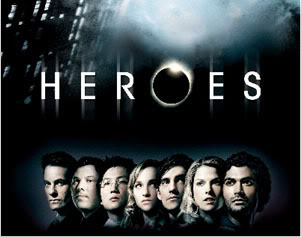‘The Dark Knight’ Not Wowing them in Japan
 Apparently, Japanese audiences are more interested in the works of Hayao Miyazaki than Bob Kane and Bill Finger. The Dark Knight is performing under expectations in Japan with just $8.7 million in box office receipts after three weeks based on figures at Filmjunk.com.
Apparently, Japanese audiences are more interested in the works of Hayao Miyazaki than Bob Kane and Bill Finger. The Dark Knight is performing under expectations in Japan with just $8.7 million in box office receipts after three weeks based on figures at Filmjunk.com.
Compare that with the $93.2 million Miyazaki’s Ponyo on the Cliff has earned in just four weeks.
Film critic Chika Minagawa suggests, "The story is very pessimistic. It has a dark and gloomy texture that Japanese movie fans do not find appealing in a ‘comic hero’ film… Japanese movie fans expect such films to be fun and action packed, for the hero to be attractive, for the villain to be loud and outrageous, and for the movie itself to be easy to understand and light."
The Dark Knight will break the $900 million worldwide gross receipts benchmark over the weekend and is likely to break the $500 million domestic mark in September, although possibly fall short of the $550 million Warner Bros. estimated.


 Marvel Comics announced a deal with
Marvel Comics announced a deal with  In today’s brand-new episode of
In today’s brand-new episode of  Attention, true believers! Next month’s issue of manga magazine Shonen Jump will feature the premiere of Stan Lee and Hioryuki Takei’s Ultimo, which was announced back in April during New York Comic Con.
Attention, true believers! Next month’s issue of manga magazine Shonen Jump will feature the premiere of Stan Lee and Hioryuki Takei’s Ultimo, which was announced back in April during New York Comic Con.
 After a pretty unambiguously down second season, the NBC show Heroes is looking to get the magic back from its debut season that marked it as the network’s most important show.
After a pretty unambiguously down second season, the NBC show Heroes is looking to get the magic back from its debut season that marked it as the network’s most important show.
 Manga publisher Viz Media will be looking to take on new projects, and even possibly some non-Manga content,
Manga publisher Viz Media will be looking to take on new projects, and even possibly some non-Manga content,  Sixty years ago next year, the remnants of the Fleischer Studio teamed up with the folks at St. John Comics (Tor, Three Stooges, and the original 3-D comics) to create Casper The Friendly Ghost #1. It lasted five issues. Paramount, owners of the Fleischer operation, took the license over to Harvey Comics and a legend floated off the ground.
Sixty years ago next year, the remnants of the Fleischer Studio teamed up with the folks at St. John Comics (Tor, Three Stooges, and the original 3-D comics) to create Casper The Friendly Ghost #1. It lasted five issues. Paramount, owners of the Fleischer operation, took the license over to Harvey Comics and a legend floated off the ground.










